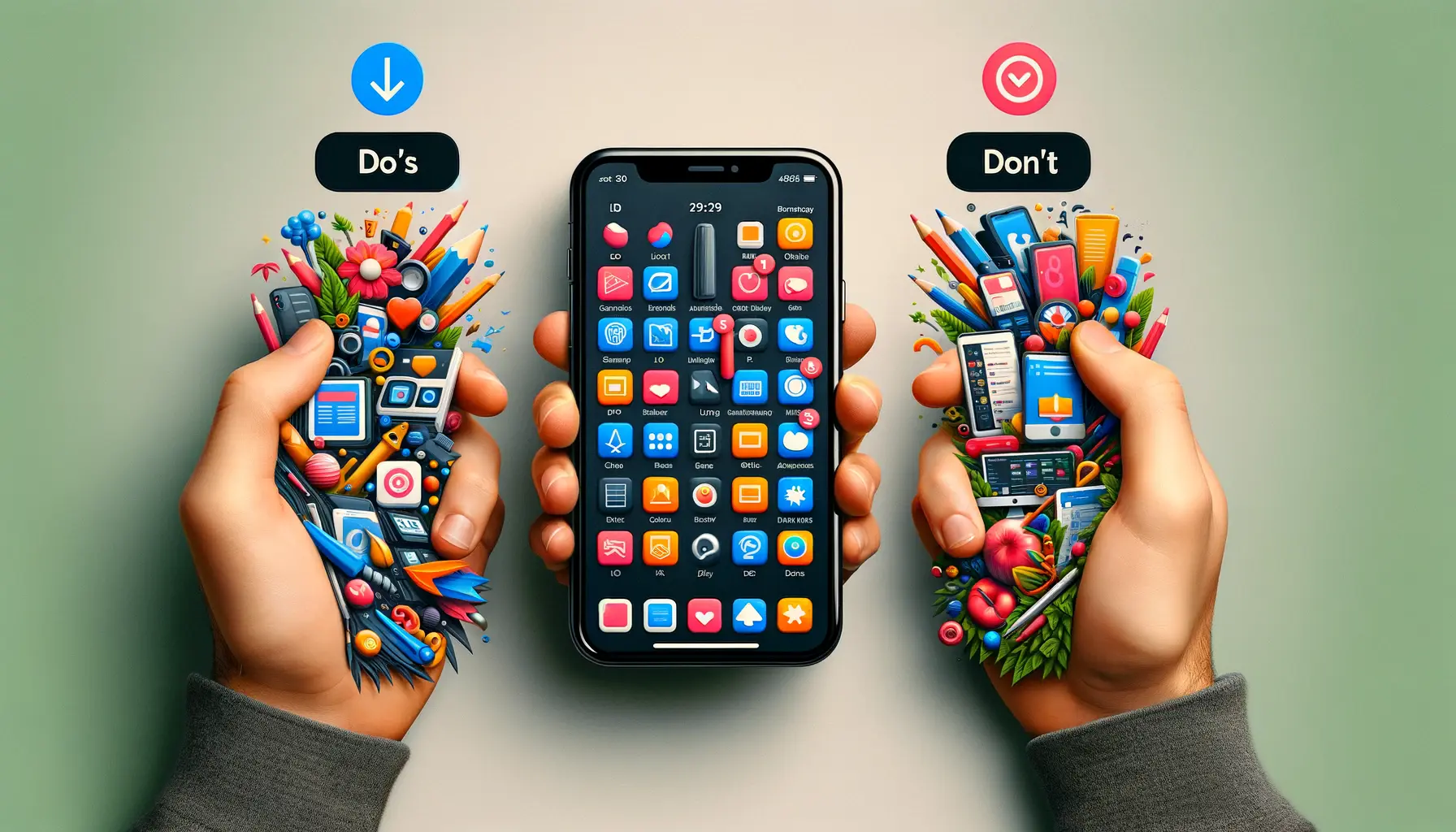Web Content Accessibility Guidelines (WCAG) have become the cornerstone for building accessible digital environments.
As the internet evolves into an increasingly essential part of daily life, ensuring that web content is accessible to everyone, regardless of their physical or cognitive abilities, has never been more critical.
For web designers, understanding and implementing WCAG guidelines is not just about adhering to legal requirements; it’s about embracing an inclusive approach to design that acknowledges the diversity of web users.
This article delves deep into the WCAG, offering web designers a comprehensive guide to making their websites not only compliant but also welcoming to all users.
The WCAG, developed by the World Wide Web Consortium (W3C), outlines a series of recommendations for making web content more accessible to people with disabilities.
These guidelines are organized around four fundamental principles: perceivable, operable, understandable, and robust (POUR).
By adhering to these principles, web designers can ensure their websites offer a more inclusive user experience.
This article aims to unpack these guidelines, providing actionable insights and strategies for web designers to integrate accessibility into their projects from the ground up.
- Introduction to WCAG for Web Designers
- Understanding the Four Pillars of WCAG
- Practical Application of WCAG in Web Design
- Accessibility and Visual Design
- Enhancing Navigation and Structure for Accessibility
- Interactive Elements and Dynamic Content Accessibility
- Accessibility Testing and Maintenance
- Embracing WCAG: A Path Towards Inclusive Web Design
- WCAG Guidelines FAQ
Introduction to WCAG for Web Designers
What is WCAG?
The Web Content Accessibility Guidelines (WCAG) serve as a global standard for web accessibility.
Initially introduced to address the need for digital inclusivity, WCAG has undergone several updates to accommodate the evolving web landscape.
The guidelines are designed to make web content more accessible to a wider range of people, including those with disabilities such as visual, auditory, motor, and cognitive impairments.
By following WCAG, web designers can create content that is more usable for everyone.
WCAG is structured around the principles of being perceivable, operable, understandable, and robust.
These principles ensure that users can perceive the information being presented, operate the interface, understand the information and the operation of the user interface, and access the content as technologies advance.
For web designers, this framework provides a comprehensive checklist for evaluating and enhancing the accessibility of their projects.
Importance of WCAG in Web Design
Integrating WCAG guidelines into web design projects is not only a matter of legal compliance but also a reflection of ethical design practices.
Accessible web design ensures that all users, regardless of their abilities, can access and interact with web content.
This inclusivity broadens the reach of web content, opening up opportunities for individuals with disabilities to participate fully in digital life.
Moreover, accessible websites tend to have better search engine rankings, faster loading times, and a wider audience reach, benefiting both users and businesses alike.
For web designers, embracing WCAG guidelines means adopting a user-centered design approach that prioritizes the needs of diverse user groups.
This approach not only enhances the user experience for individuals with disabilities but also improves the overall usability of the web for all users.
By focusing on accessibility from the outset, designers can avoid the need for costly retrofits and ensure their websites are future-proofed against evolving accessibility standards.
Incorporating WCAG guidelines into your web design process is essential for creating inclusive and accessible digital experiences that cater to the needs of all users.
Understanding the Four Pillars of WCAG
The foundation of WCAG is built upon four key principles, often referred to by the acronym POUR: Perceivable, Operable, Understandable, and Robust.
These principles form the backbone of accessible web design, guiding web designers in creating content that is accessible to a broader audience.
Let’s delve into each principle, highlighting their significance and how they can be implemented in web design.
Perceivable: This principle emphasizes the importance of making information and user interface components presentable to users in ways they can perceive.
This means that regardless of a user’s sensory abilities, they should be able to access the content.
To achieve this, web designers can:
- Provide text alternatives for non-text content, such as images, videos, and audio files, ensuring that it can be changed into other forms people need, such as large print, braille, speech, symbols, or simpler language.
- Ensure that videos and audio files have captions and transcripts, making them accessible to users who are deaf or hard of hearing.
- Use sufficient contrast between text and its background to make text readable for users with visual impairments.
- Make content adaptable; for example, ensuring that it’s not necessary to view it in a single orientation or with a specific screen size.
Operable: User interface components and navigation must be operable by everyone, including users with disabilities.
This principle focuses on ensuring that all users can interact with the website using various tools and methods.
To adhere to this principle, designers should:
- Ensure all functionality is available from a keyboard for users who cannot use a mouse.
- Give users enough time to read and use content, which is crucial for users who may need longer than average to complete tasks.
- Not design content in a way that is known to cause seizures, avoiding elements that flash more than three times in any one second period.
- Provide ways to help users navigate, find content, and determine where they are, such as through clear headings, labels, and navigation options.
Understandable: The principle of understandability ensures that users can comprehend the information as well as the operation of the user interface.
This involves making text readable and predictable and providing input assistance to prevent and correct mistakes.
Strategies include:
- Using clear and simple language as well as explaining any unusual words or phrases.
- Making web pages appear and operate in predictable ways to avoid confusing users.
- Helping users avoid and correct mistakes, providing descriptive error messages and suggestions for correction.
Robust: Content must be robust enough to be interpreted reliably by a wide variety of user agents, including assistive technologies.
This means that as technology advances, the content should remain accessible.
To ensure robustness, web designers can:
- Maximize compatibility with current and future user tools, such as by using clean, valid HTML and ARIA labels where appropriate.
- Test content with different assistive technologies to ensure it can be accessed by people with diverse disabilities.
By integrating these four principles into your web design process, you can create more accessible and inclusive websites that cater to the needs of all users, regardless of their abilities.
Practical Application of WCAG in Web Design
Applying the WCAG guidelines to web design projects involves a strategic approach to ensure that websites are accessible and user-friendly for all visitors.
This section outlines practical steps and considerations for web designers to effectively integrate WCAG principles into their work.
Text Alternatives and Media Accessibility
One of the first steps in adhering to WCAG guidelines is ensuring that all non-text content on a website has text alternatives.
This makes information accessible to people who use assistive technologies.
Here are key strategies:
- Provide alt text for images that convey the same message or function as the image itself.
- Use captions and audio descriptions for videos, making them accessible to users who are deaf or hard of hearing, as well as those who are blind or have low vision.
- Include transcripts for audio content, offering an alternative for users who prefer or require text over audio.
Ensuring Keyboard Navigation
Operability is a crucial aspect of WCAG, with keyboard navigation being a fundamental requirement.
Many users rely on keyboards or similar input devices instead of a mouse.
To optimize for keyboard navigation:
- Ensure all interactive elements are focusable and can be operated through keyboard commands.
- Avoid keyboard traps, where a user’s keyboard focus can become stuck on a particular element.
- Provide visible focus indicators to help users understand where they are on the page.
Creating Understandable Content and Interfaces
Understandability in web design means making content logical and predictable, as well as easy to read.
Implementing this principle involves:
- Writing content in plain language and defining any necessary technical terms or jargon.
- Organizing content logically, using headings and labels to structure information clearly.
- Designing forms and other interactive elements in a way that prevents errors, and providing clear error messages and correction suggestions when errors do occur.
Testing for Robustness and Compatibility
A robust website is accessible through a wide range of technologies, including various browsers and assistive tools.
To ensure your website’s robustness:
- Validate HTML and CSS code to ensure it adheres to web standards, reducing the likelihood of compatibility issues.
- Test your website with different assistive technologies, such as screen readers and voice recognition software, to identify and fix accessibility barriers.
- Stay updated with the latest web technologies and WCAG guidelines to ensure ongoing compliance and accessibility.
Accessibility should be considered at every stage of the web design process, from planning through development to ongoing maintenance. By applying these practical WCAG strategies, web designers can create more inclusive and accessible websites.
Accessibility and Visual Design
Visual design plays a pivotal role in creating accessible web experiences.
It’s not just about aesthetics; it’s about conveying information in a way that can be perceived by everyone.
This part of the article explores how web designers can balance visual appeal with accessibility, ensuring that design elements enhance rather than hinder the user experience for people with disabilities.
Color Contrast and Use
Color is a powerful tool in web design, but it must be used thoughtfully to ensure accessibility.
High contrast between text and its background is essential for users with visual impairments.
Here are some guidelines:
- Ensure text and background colors have a contrast ratio of at least 4.5:1 for normal text and 3:1 for large text.
- Avoid using color as the sole means of conveying information. Supplement color cues with text labels or patterns.
- Test your website with a color contrast analyzer tool to identify and correct any issues.
Text Size and Readability
The readability of your website’s text is crucial for accessibility.
This involves more than just choosing the right font size; it’s about the overall legibility of your content.
To improve text readability:
- Use font sizes that are large enough for easy reading but can also be resized by the user without losing content or functionality.
- Choose fonts that are easy to read and avoid using too many different fonts on the same page.
- Ensure ample line spacing and paragraph spacing to prevent text from appearing cluttered.
Adaptive and Responsive Design
An adaptive and responsive design ensures that your website can be accessed and navigated easily on any device, from desktop computers to smartphones.
This flexibility is especially important for users with disabilities who may rely on mobile devices and various screen sizes.
Implementing adaptive design involves:
- Using responsive design techniques to allow your website’s layout to adjust dynamically based on the screen size and orientation.
- Ensuring interactive elements are easily clickable or tappable, with adequate size and spacing for touch navigation.
- Testing your website on multiple devices and screen sizes to identify and address any usability issues.
Incorporating accessibility into visual design not only benefits users with disabilities but also improves the overall user experience for all visitors. By following these guidelines, web designers can create visually appealing websites that are inclusive and accessible to everyone.
Enhancing Navigation and Structure for Accessibility
Effective navigation and a well-structured website are crucial for accessibility.
They ensure that all users, including those with disabilities, can find what they’re looking for and understand the site’s content.
This section covers strategies for enhancing your website’s navigation and structure to meet WCAG standards and improve the overall user experience.
Logical Structure and Semantic HTML
Using semantic HTML to structure your content not only improves SEO but also makes your website more accessible.
Semantic elements like
- Use heading tags (
<h1>to<h6>) to organize content hierarchically, making it easier for users to navigate through the sections. - Implement
<nav>elements for navigation menus, allowing screen readers to identify them as primary navigation blocks. - Ensure that each page has a logical order, with content flowing naturally from top to bottom and left to right.
Accessible Menus and Link Descriptions
Menus and links are essential for website navigation, but they must be designed with accessibility in mind.
Accessible menus ensure that all users can navigate your site efficiently, while descriptive link texts provide context for where a link will take the user.
To improve menu and link accessibility:
- Ensure that all menus are keyboard navigable and that dropdowns can be accessed without a mouse.
- Use descriptive link texts that make sense out of context, avoiding vague phrases like “click here” or “read more.”
- Provide skip links at the top of pages, allowing users to bypass repetitive navigation links and go directly to the main content.
ARIA Landmarks and Roles
Accessible Rich Internet Applications (ARIA) landmarks and roles offer additional ways to enhance the accessibility of your website’s navigation and structure.
They provide screen reader users with information about the different areas of a page, making it easier to navigate.
Implementing ARIA landmarks involves:
- Using ARIA landmarks such as
role="navigation"for navigation menus androle="main"for the main content area to define the structure of your web pages. - Applying ARIA roles to interactive elements to describe their function, such as
role="button"for elements acting as buttons. - Ensuring that custom interactive elements created with JavaScript are fully accessible by assigning appropriate ARIA roles and properties.
By focusing on logical structure, accessible menus, and the proper use of ARIA landmarks, web designers can significantly improve the navigability and accessibility of their websites, creating a more inclusive digital environment.
Interactive Elements and Dynamic Content Accessibility
Interactive elements and dynamic content are integral parts of modern web design, offering users engaging experiences.
However, ensuring these features are accessible is crucial for users with disabilities.
This section explores how to make interactive elements and dynamic content WCAG compliant, enhancing accessibility without compromising on functionality or user engagement.
Ensuring Keyboard Accessibility for Interactive Elements
Interactive elements like forms, buttons, and custom controls must be fully operable using a keyboard.
This is essential for users who cannot use a mouse due to physical disabilities.
To achieve keyboard accessibility:
- Test all interactive elements to ensure they can be accessed and used with keyboard commands alone, including tab navigation and enter/space key activation.
- Implement focus styles to highlight interactive elements when they are focused, aiding navigation for keyboard and screen reader users.
- Avoid creating custom controls that cannot be operated with keyboard commands unless equivalent keyboard-accessible functionality is provided.
Accessible Forms and Error Handling
Forms are a common element on websites, used for everything from search functions to user registration.
Making forms accessible involves clear labeling, error handling, and ensuring all form controls are accessible by keyboard and screen readers.
Key strategies include:
- Labeling each form control clearly with
<label>elements oraria-labelattributes to ensure screen readers can convey their purpose. - Designing error messages that are specific, clear, and provide guidance on how to correct the error, ideally positioned near the relevant form control.
- Providing clear instructions for form completion and indicating mandatory fields explicitly.
Managing Dynamic Content Updates
Dynamic content, such as live feeds, notifications, and AJAX-driven updates, can pose challenges for accessibility.
Users with visual impairments or cognitive disabilities may struggle to detect changes on the page.
To make dynamic content accessible:
- Use ARIA live regions to inform screen reader users of content updates without needing to refresh the page or navigate away from the current focus.
- Ensure that updates to content do not disorient users or move focus unexpectedly, which can be disorienting for keyboard and screen reader users.
- Provide controls for users to pause, stop, or hide moving, blinking, or scrolling content that starts automatically.
Assuming that dynamic content is automatically accessible can lead to significant barriers for users with disabilities. Proactive measures are required to ensure that updates enhance the user experience for everyone.
Accessibility Testing and Maintenance
Creating an accessible website is an ongoing process that extends beyond the initial design and development phases.
Regular testing and maintenance are crucial to ensure that accessibility standards are met and maintained as web technologies and content evolve.
This section outlines effective strategies for testing and maintaining the accessibility of your website.
Implementing Accessibility Testing
Accessibility testing is essential to identify and address potential barriers for users with disabilities.
It involves a combination of automated tools and manual testing to cover a wide range of accessibility issues.
To implement effective accessibility testing:
- Utilize automated accessibility testing tools to scan your website for common accessibility issues. These tools can quickly identify problems such as missing alt text, insufficient color contrast, and missing form labels.
- Conduct manual testing, including keyboard navigation tests and screen reader evaluations, to uncover issues that automated tools might miss.
- Engage users with disabilities in usability testing to gain insights into real-world accessibility challenges and user experiences.
Maintaining Accessibility in Web Maintenance
Accessibility maintenance is an ongoing commitment that ensures your website remains accessible over time.
As new content is added and updates are made, it’s important to maintain accessibility standards.
Key maintenance strategies include:
- Establishing accessibility guidelines for content creators and developers to follow when adding new content or making updates to the website.
- Regularly reviewing and updating your website to ensure compliance with the latest WCAG standards and legal requirements.
- Training your team on accessibility best practices and the importance of inclusive design to foster an accessibility-minded culture within your organization.
Creating an Accessibility Statement
An accessibility statement is a public declaration of your commitment to web accessibility.
It provides information on your website’s accessibility features, known limitations, and how users with disabilities can request accommodations or provide feedback.
To create an effective accessibility statement:
- Outline the accessibility standards your website adheres to, such as WCAG 2.1 Level AA.
- Describe any known accessibility issues and your plans for addressing them.
- Provide contact information for users to report accessibility issues or request accommodations.
- Update your accessibility statement regularly to reflect changes and improvements in your website’s accessibility.
Accessibility testing and maintenance are not just about compliance; they’re about ensuring that your website offers an inclusive and equitable user experience. By adopting a proactive approach to accessibility, you can build and maintain a website that truly welcomes everyone.
Embracing WCAG: A Path Towards Inclusive Web Design
Understanding and implementing the Web Content Accessibility Guidelines (WCAG) is more than a compliance checklist for web designers; it’s a commitment to inclusivity and a recognition of the diverse needs of web users.
As we’ve explored the multifaceted aspects of WCAG, from the foundational principles to practical applications in web design, it’s clear that accessibility should be an integral part of the design process, not an afterthought.
This conclusion aims to reinforce the importance of WCAG in creating web experiences that are not only accessible but also engaging and user-friendly for everyone.
The Heart of Accessible Design
At the heart of accessible web design is the understanding that the internet is a universal resource meant to be shared and accessed by all, regardless of ability.
The WCAG guidelines serve as a bridge, enabling web designers to create content that fulfills this vision.
By focusing on the principles of being perceivable, operable, understandable, and robust, designers can ensure their websites cater to a broad audience, including those with disabilities.
WCAG: Beyond Compliance
While adhering to WCAG is often driven by legal compliance, its benefits extend far beyond meeting regulatory requirements.
Accessible websites tend to have better SEO, reach a wider audience, and provide a more satisfying user experience.
This not only reflects positively on a brand’s image but also contributes to a more inclusive digital environment.
Moreover, by embracing WCAG guidelines, designers and developers can push the boundaries of creativity, finding innovative solutions that enhance accessibility while maintaining aesthetic appeal and functionality.
- Enhanced user experience for all visitors, not just those with disabilities.
- Improved search engine rankings and wider audience reach.
- Innovative design solutions that balance aesthetics with accessibility.
Commitment to Continuous Improvement
Accessibility is an ongoing journey, not a one-time goal.
The digital landscape is continually evolving, and with it, the tools and technologies we use to access the web.
Maintaining an accessible website requires regular testing, updates, and a willingness to adapt to new standards and user needs.
By committing to this process, web designers and developers can ensure their websites remain accessible to everyone, now and in the future.
Final Thoughts
Understanding WCAG guidelines for web designers is a critical step towards building a more inclusive internet.
It challenges us to rethink our design practices, to consider a wider range of user experiences, and to create digital spaces that welcome everyone.
As we move forward, let us embrace the principles of WCAG not just as a requirement, but as a foundation for innovation, creativity, and social responsibility in web design.
Quality web design is key for a great website! Check out our service page to partner with an expert web design agency.
WCAG Guidelines FAQ
Explore frequently asked questions about the Web Content Accessibility Guidelines (WCAG) to deepen your understanding and implementation of these crucial standards in web design.
WCAG stands for Web Content Accessibility Guidelines, developed by the W3C to provide a standard for creating accessible web content for people with disabilities.
WCAG guidelines ensure web designers create content that’s accessible to everyone, including people with disabilities, enhancing usability and inclusivity.
WCAG compliance means a website meets the specified accessibility standards, making its content accessible to people with various disabilities.
WCAG compliance is measured by adherence to success criteria outlined in the guidelines, categorized into three levels: A, AA, and AAA.
The principles of WCAG are perceivable, operable, understandable, and robust, ensuring web content is accessible and usable for all.
Yes, small websites can significantly benefit from WCAG compliance by improving accessibility, user experience, and potentially expanding their audience.
WCAG 2.1 introduced additional guidelines focusing on mobile accessibility, people with low vision, and those with cognitive and learning disabilities.
Websites should be tested for WCAG compliance regularly, especially after updates or changes, to ensure ongoing accessibility for all users.














